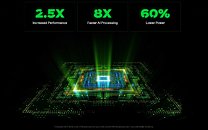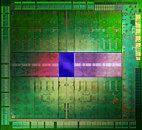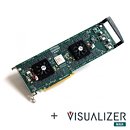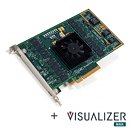Moore Threads MTT S80 GPU Benchmarked by PC Watch Japan
The Moore Threads MTT S80 gaming-oriented graphics card has been tested mostly by Chinese hardware publications, but Japan's PC Watch has managed to get hold of a sample unit configured with 16 GB GDDR6 (14 Gbps) for evaluation purposes and soon published their findings in a "HotHot REVIEW!" The MTT S80 GPU appears to be based on PowerVR architecture (developed by Imagination Technologies), but official Moore Threads literature boasts that their own Chunxaio design is behind all proceedings with 4096 "MUSA" cores. The GPU's clock speed is set at 1.8 GHz, and maximum compute performance has been measured at 14.2 TFLOPS. A 256-bit memory bus grants a bandwidth transfer rate of 448 GB/s. PC Watch notes that the card's support for PCIe Gen 5 x 16 (offering up to 128 GB/s bandwidth) is quite surprising, given the early nature of this connection standard.
Moore Threads has claimed in the past that their cards support Direct X, but PC Watch has discovered that the S80 does not work with DX12, and their tests also demonstrated significant compatibility issues under DX11—with plenty of system freezes and error messages logged. The reviewer(s) had to downshift in some cases to DX9 game environments, in order to gather reliable/stable data. TPU's GPU-Z utility is shown to have no registration information for the S80, and it cannot read the GPU's clock. PC Watch compared their sample unit to an NVIDIA GeForce GTX 1050 Ti graphics card—the entry level 2016-era GPU managed to best the newer competition in terms of in-game performance and power efficiency.
Moore Threads has claimed in the past that their cards support Direct X, but PC Watch has discovered that the S80 does not work with DX12, and their tests also demonstrated significant compatibility issues under DX11—with plenty of system freezes and error messages logged. The reviewer(s) had to downshift in some cases to DX9 game environments, in order to gather reliable/stable data. TPU's GPU-Z utility is shown to have no registration information for the S80, and it cannot read the GPU's clock. PC Watch compared their sample unit to an NVIDIA GeForce GTX 1050 Ti graphics card—the entry level 2016-era GPU managed to best the newer competition in terms of in-game performance and power efficiency.




















